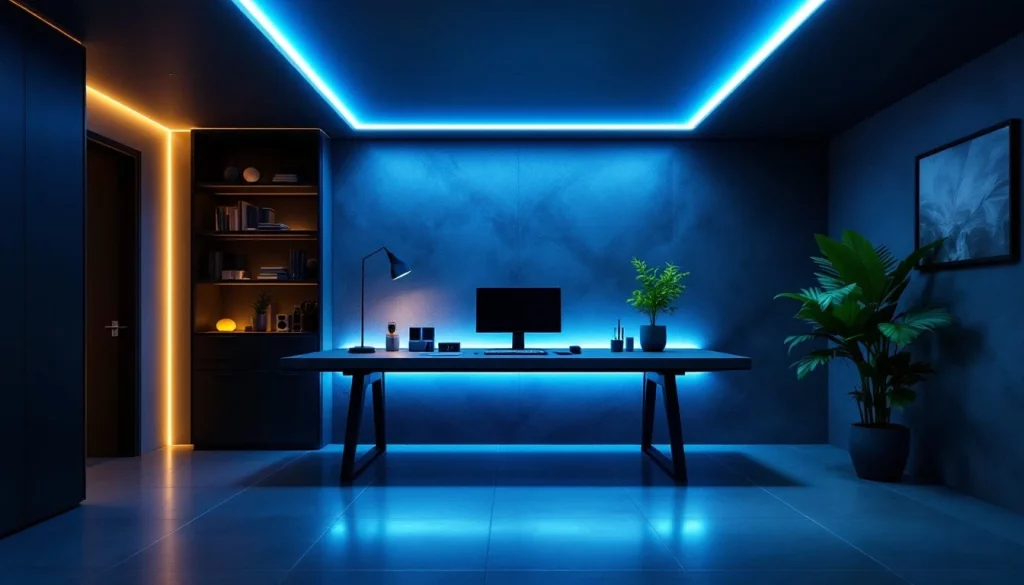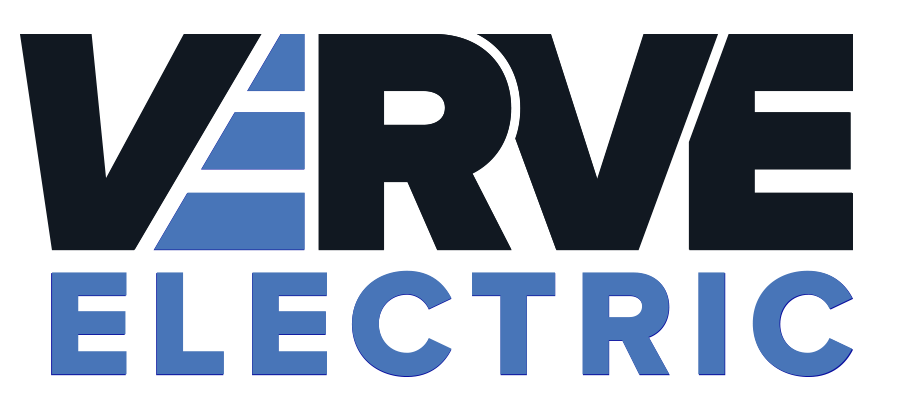5 Proven Benefits of Installing LED Lighting in Your Home: Cost Savings, Durability, and Enhanced Ambiance
February 25, 2025By installing LED lighting in your home, you can experience significant cost savings, as LEDs use up to 75% less energy than incandescent bulbs, potentially saving you around $100 annually. Their durability is another major benefit, with LEDs lasting up to 25 times longer than incandescent bulbs and up to 50,000 hours or more, reducing replacement and maintenance costs. LEDs also offer enhanced ambiance with customizable color temperatures and dimmability options, as well as smart features like geo-fencing and automation. Additionally, LEDs are highly energy-efficient, using roughly 50% less electricity than traditional options, and they can increase your home’s value. Exploring these benefits further can reveal even more advantages of making the switch to LED lighting.

5 Proven Benefits of Installing LED Lighting in Your Home: Cost Savings, Durability, and Enhanced Ambiance
Installing LED lighting in your home can substantially reduce your energy costs, as LEDs use roughly 50% less electricity than traditional incandescent, fluorescent, and halogen options. This energy efficiency, combined with their extended lifespan of 30,000 to 50,000 hours, minimizes the need for frequent replacements and lowers maintenance costs. Additionally, LED lights offer customizable ambiance options, such as selectable color temperatures and dimmability, allowing you to create the perfect mood and environment in any room of your home.
LED Lighting
When considering LED lighting for your home, it is crucial to comprehend the types and benefits of these lights. LED lights come in various forms, including bulbs, strips, and fixtures, each offering unique advantages such as energy efficiency, extended lifespan, and durability. By choosing the right type of LED lighting, you can substantially reduce your energy costs, minimize maintenance, and enhance the ambiance of your home.
Definition and Types of LED Lights
LED lights, emitting light when electric current flows through them, are semiconductor devices that have revolutionized home lighting. These devices operate by electrons recombining with electron holes, releasing energy as photons. Here are some common types of LED lights:
- General Purpose Light Bulbs: A-style or A-line bulbs for standard fixtures.
- Reflector and Bulged Reflector: R, BR, or PAR bulbs for directed light in track and recessed lights.
- Decorative Light Bulbs: Globe and candelabra-base bulbs for decorative fixtures.
- Specialized LEDs: LED strip lights, tube lights, and panel lights for various applications, enhancing energy efficiency and durability.
Cost Savings
By switching to LED lighting, you can notably reduce your energy costs. On average, a household can save around $100 per year, while businesses can see savings as high as 60-70% annually due to the high energy efficiency of LEDs, which use up to 75% less energy than incandescent bulbs.
LEDs also last up to 25 times longer than incandescent bulbs, reducing the frequency of replacements and the associated maintenance costs. This extended lifespan means fewer trips to the store and less time spent changing bulbs, adding to your overall savings.
Additionally, LEDs are more efficient than fluorescent lamps, with some studies showing they are up to 44% more efficient, leading to substantial energy and cost savings over time.
Energy Efficiency and Financial Benefits
Switching to LED lighting in your home can substantially cut your energy expenses and enhance your financial stability. Here are the key benefits:
- Energy-Efficient Bulbs: LED lights use up to 85% less electricity than traditional incandescent or halogen bulbs.
- Cost Savings: Replacing one incandescent bulb with an LED can save you $100-$300 over its lifetime.
- Long Lifespan: LEDs last up to 25 times longer than incandescent bulbs, reducing replacement costs.
- Lower Maintenance: With fewer replacements needed, you’ll save time and money on maintenance.
Durability
When you install LED lighting in your home, you can expect a substantially longer lifespan compared to traditional lighting options. LED lights can last up to 40,000 hours or more, which is up to 50 times longer than incandescent bulbs. Additionally, their durability is enhanced by impact resistance, with IK ratings such as IK08 and IK10 indicating the ability to withstand various levels of mechanical impact, ensuring your lights remain functional even in demanding environments.
Long Lifespan and Impact Resistance
Installing LED lighting in your home offers a significant advantage regarding longevity and durability. Here are some key points to ponder:
- Long Lifespan: LED lights can last up to 100,000 hours, which is 25 times longer than incandescent bulbs.
- Energy Efficiency: They consume much less electricity, reducing your energy bills over time.
- Impact Resistance: Look for LED lights with high IK ratings (e.g., IK08 or IK10) to guarantee they can withstand mechanical impacts.
- Reduced Maintenance: With their extended lifespan, you’ll need to replace them less often, saving you time and money.
Enhanced Ambiance
When you install LED lighting, you can substantially enhance the ambiance of your home through customizable features and smart options. You can choose from a wide range of color temperatures and dimmability to create the perfect atmosphere for each room, whether it’s a warm and inviting living room or a bright and focused workspace.
Smart LED systems allow you to adjust brightness, change colors, and create personalized schedules or scenes via your smartphone or voice assistant, making it easy to tailor the lighting to your mood, activities, or time of day.
Additionally, features like geo-fencing, motion sensors, and automation can further customize your lighting experience, ensuring your home’s atmosphere is always just right and easily adaptable to your lifestyle.
Customizable Features and Smart Options
LED lighting in your home offers an array of customizable features and smart options that substantially enhance the ambiance and functionality of your living space.
Here are some key benefits:
- Color Changing and Dimming: Adjust the color, brightness, and warmth of your lights to match any mood or activity with smart LED lights.
- Smart Controls: Control your lights via smartphone apps, voice commands, or even geo-fencing to turn lights on or off based on your location.
- Scheduling and Automation: Set schedules and scenes for your lights to automatically adjust throughout the day, enhancing both convenience and energy efficiency.
- Integration with Smart Home Systems: Pair your lights with other smart devices like thermostats and security systems for a cohesive smart home experience.
As you consider upgrading your home’s lighting, one of the most significant advantages of LED lighting is its energy efficiency. By switching to LEDs, you can reduce your electricity consumption by up to 75% compared to traditional incandescent bulbs. This significant reduction in energy usage translates into substantial cost savings over time. For instance, according to calculations, you can save around $750 per replaced fixture, and with their long lifespan of up to 23 years, you’ll also cut down on frequent bulb replacements.
The durability of LED lights is another key benefit. These lights last up to 25 times longer than incandescent bulbs, which means less maintenance and fewer trips to the store for replacements. This durability, combined with their energy efficiency, contributes to an increase in your home’s value. Potential buyers are often attracted to homes with modern, energy-efficient lighting, which can boost your home’s worth by around 1 to 3 percent.
Incorporating LED lighting can also enhance your home’s ambiance and functionality. With options like dimmable LEDs and smart lighting, you can customize the lighting to suit various moods and tasks, making your home more inviting and functional. This not only improves the aesthetic appeal but also adds to the overall value of your home.
